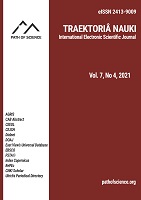Етнокультурні витоки слова са́ра ʻщукаʼ у староукраїнській мові
Ethnocultural origin of the Word са́ра (“pike”) in the Old Ukrainian language
Author(s): Roman MinyailoSubject(s): Theory of Literature
Published by: Altezoro, s. r. o. & Dialog
Keywords: fish names; etymon; motivation; colour name; ethno-religious features
Summary/Abstract: The article studies the motivational processes of the emergence of the old Ukrainian fishing professionalism са́ра, used to denote pike in the language of Zaporozhian Cossacks. The relevance of the research is determined by the importance of analysing names that reflect ethno-cultural stereotypes, the original semantics of which dates back to the Indo-European period.To identify the mechanisms of formation of the semantic model, according to which the word “са́ра” “pike” is formed, the diachronic method of research (according to the principle of relative chronology) was used together with the linguo-cultural analysis, which proved that: ichthyonymic metaphorization (creation of the figurative name of a fish) was most likely preceded by paronymic attraction (phonetic and semantic convergence of a name of a colour with a female name of ancient Jewish origin) with subsequent metaphorization of the stereotyped name of a Jew as an ichthyonym. Undoubtedly, the paronymic attraction was also facilitated by the mutilation of the noun component of the attributive phrase са́ра (шара) fish, since fishing nouns as derivatives of two-lexemic analytical nouns can be traced in temporal and spatial dimensions in various lexical-semantic groups of fishing names: варовый [tax], свôйска [marine], сьвітова́ [tonya], ка́мбалові [fish], лососе́ві [fish], etc.Thus, the archaic fishing professionalism of са́ра “pike” is connected with the old Ukrainian names of achromatic grey colour сѣрый and шарый, fitting into the motivational model «the name of the animal by the colour of its fur, feathers, scales». The colour name itself as a basis for metaphorical transference reaches the common Indo-European lexical fund and in the historical dimension combines the meaning of «dark» and «light», realising in the ancient and old Ukrainian ideology the idea of darkness and light, where the «dark side» is the image of a person of a different religion with his or her social and ethno-confessional differences, in particular, the colour of clothing.The researched material encourages further study of the Old Ukrainian lexicon in the aspect of the formation of ethno-ideological bases.
Journal: Traektoriâ Nauki
- Issue Year: 7/2021
- Issue No: 04
- Page Range: 4012-4017
- Page Count: 6
- Language: Ukrainian

